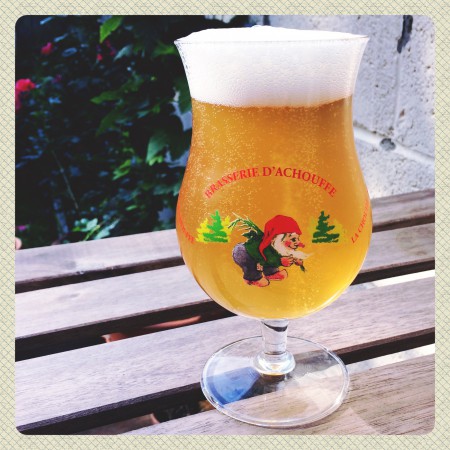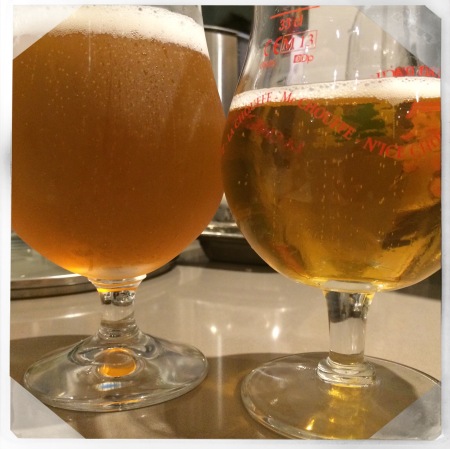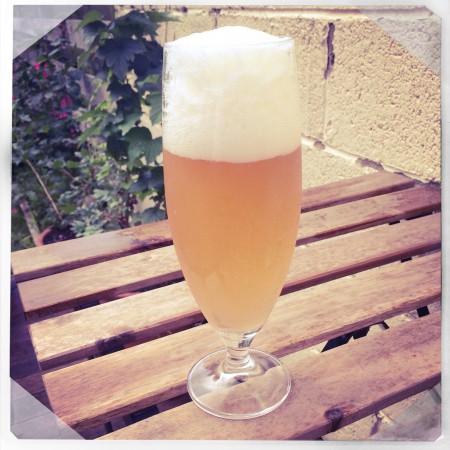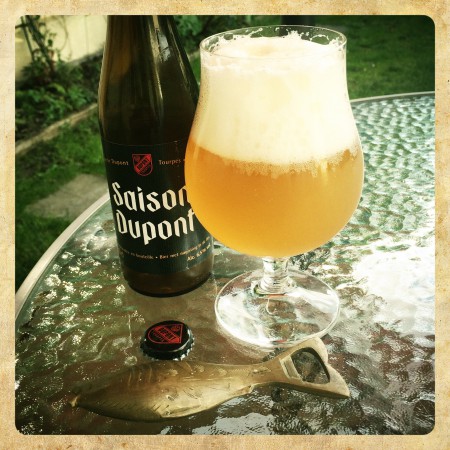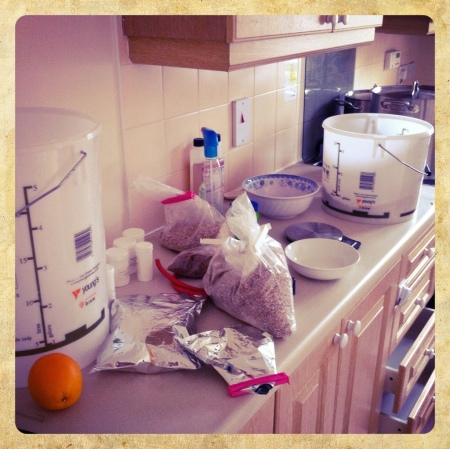
Here’s proof that disastrous brew days can often result in great beer.
Last autumn, I remember regaling a few of the SDB lads with tales of bad luck that I’d been having with my brewing. It seemed like every brew day had some kind of disaster. Forgotten ingredients, careless monitoring of temperatures, boil overs, infected fermenters, you name it..
The one that really pissed me off was during last summer, when a tiny fruit fly got underneath the foil I had placed on top of Trappist ale yeast starter. I was planning on making a Belgian Pale Ale during the weekend. The starter had been whizzing away on the stir plate for a day or so. I fished the fly out and called emergency services, or Rossa O’Neill, as he’s sometimes called. “Would you use it, knowing there had been a fly in it?”, I asked him. His response was not unexpected. “No, I’d be too worried about infecting an entire batch of beer”. Foolishly, I made a decision the night before brewing to use the starter.
I completed the mash and the boil and was really happy with the flavour and appearance of the wort. Time to pitch the yeasties. It was only at this point that I decided to actually taste the yeast starter. My first thought was “lambic”. That’s not good. Yeast starters never taste great, but this was decidedly tart. The funny thing is, it actually tasted quite nice. I stood sipping it for ten minutes while agonizing whether to pitch the starter or not. In the end, I chucked it down the sink, as I thought it was too risky.
Before I chucked the starter, I realised that I had a yeast cake from a saison available. It wouldn’t be a Belgian Pale Ale after all, but an amber saison instead. Though commercial dark saisons exist, the classic examples tend to be golden-orange in colour. The only problem was that there was a golden saison still gently fermenting on top of it. So I racked the saison into a corny, praying that it had reached final gravity and if not, that there would be enough yeast in there to finish the job.
So anyway, I racked the golden saison into a corny and opened the vial of brett. This was my first time using a vial of brett and I was surprised by how little yeast there was in there compared to the vials of saccharomyces I’m used to. I pitched the brett into the corny and, like an idiot, I rinsed the brett vial with some of the beer left in the fermenter. Yep, I had dunked a brett vial into a yeast cake that I wanted to re-use. Cursing myself, I pitched the potentially “infected” yeast slurry into my amber saison wort and hoped for the best. I also sealed up the corny keg containing the brett inocculated version.
Three or four weeks later, I ended up bottling the amber saison. Once it was fully conditioned, I had a taste and thought it was a decent saison with a bit more toast and caramel character. But on subsequent tastings I could taste the beginnings of something funky in there. With each bottle I opened, the brett character had intensified slightly to a level where it was unmistakably a “brett” beer. There was a little more pineapple character, more spicy phenols and a tiny hint of barnyard poking through. But, it was absolutely delicious. Easily one of the most complex beers I had produced in over 5 years as a home brewer.
Fast forward six months. The “accidental” amber saison won a silver medal in the 2016 Nationals. I’m currently still enjoying it, but I’m wary of the fact that there was some crystal malt in the Belgian Pale Ale grist and that the critters in the bottle haven’t finished snacking yet. My plan is to work my way through the remainder of the batch before the weather gets warmer and the bottles become bottle bombs.
And the moral of the story? Disastrous brew days happen, but they can produce the most delicious results. For me, it’s also a reminder that I should experiment more with new ingredients and processes.
Recipe Specifications
Boil Size: 27.90 l
Post Boil Volume: 23.40 l
Batch Size (fermenter): 19.00 l
Bottling Volume: 17.00 l
Estimated OG: 1.055 SG
Estimated Color: 19.0 EBC
Estimated IBU: 25.0 IBUs
Brewhouse Efficiency: 60.00 %
Est Mash Efficiency: 71.1 %
Boil Time: 90 Minutes
Ingredients
4.444 kg Bohemian Pilsner Malt, Weyermann (4.0 EBC), 79.6 %
0.444 kg Munich Malt (17.7 EBC), 8.0 %
0.222 kg Biscuit Malt (45.3 EBC), 4.0 %
0.222 kg Caramel/Crystal Malt – 60L (118.2 EBC), 4.0 %
0.222 kg Wheat Malt, Ger (3.9 EBC), 4.0 %
0.030 kg Pale Chocolate Malt (591.0 EBC), 0.5 %
19 g East Kent Goldings [5.70 %] – Boil 60.0, 15.8 IBUs
18 g Styrian Goldings [3.00 %] – Boil 60.0, 7.9 IBUs
0.50 Items Whirlfloc Tablet (Boil 10.0 mins)
15 g Saaz [3.00 %] – Boil 10.0 min, 1.3 IBUs
1.0 pkg Trappist Ale (White Labs #WLP500)
Mash Schedule: Bubbles’ Single Infusion, Full Body, Batch Sparge
Total Grain Weight: 5.585 kg
Mash In Add 15.64 l of water at 74.6 C 68.0 C 60 min
Sparge: Batch sparge with 2 steps (Drain mash tun , 18.35l) of 77.0 C water
23/08/2015 – Total disaster of a brew day. I went to pitch the yeast and I tasted the starter which was really sour and funky. I couldn’t think about pitching that into the wort I’d just made, so I pitched the yeast cake off the jasmine saison instead. Got knows what this will turn out like. It’s a pity, despite another boilover, the wort looked and smelled great. I’m planning on doing another starter of WLP500 next weekend, so might even do a re-brew of this.
14/09/2015 – Took a gravity sample. With the lack of simple sugars in there and the small percentage of crystal malt I wasn’t expecting a low finishing gravity of 1.002. Alcohol a little overwhelming, but definitely a decent saison flavour. Sample from the trial jar wasn’t as dark as I was expecting. Will go ahead and bottle in a few days.
17/09/2015 – Bottled with 146g of glucose (17 litres at 3 vol). Got 12 x 750ml bottles and 14 x 500ml bottles. Taste was okay, but I wouldn’t be getting too excited. Not surprising, really. This beer is a bit of a runt. Right, time to brew something that isn’t a saison.
12/11/2015 – I’ve drank quite a few bottles if this now, and it’s a decent saison. Amber coloured, bit maltier than a regular saison, but not at all sweet. Like other saisons I’ve done, it’s got that tart flavour. I also occasionally pick up a bit of funkiness in it, but I’m not sure if I’m imagining that.
23/11/2015 – I’m getting that brett character in this still. I can’t be sure if this beer was fermented with yeast where I accidentally placed a brett vial into the yeast cake to wash out the vial and then subsequently pitches this yeast. The dates on my blog don’t seems to add up, but I think this is the beer. It’s actually really tasty, I wish the brett character was stronger, so that I could decide whether it is a brett beer or not. It’s just very subtle. Quite tart, from the saison yeast. I just hope I haven’t contaminated my equipment.
20/12/2015 – It has been unseasonally warm over the last couple of days and I’m not sure if the weather caused this to happen, but there is a small pellicle in all of the remaining bottles of this. I opened a bottle this eveing only to find that it was completely undercarbonated. I ended up chucking the dud bottle.
23/01/2016 – Lovely brett nose, plenty of fruit and bags of Belgian yeast character. There isn’t a huge amount of follow through of the brett in the flavour. Big malt flavour, but not overly sweet. Still bone dry. Complex, but not funky, as brett beers go. Very, very drinkable.

